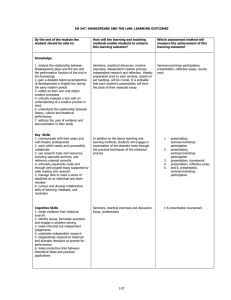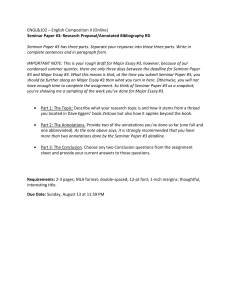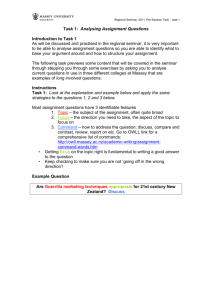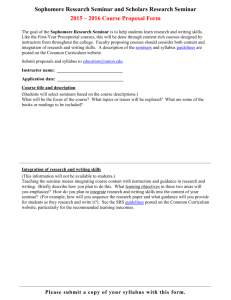Harrington
advertisement
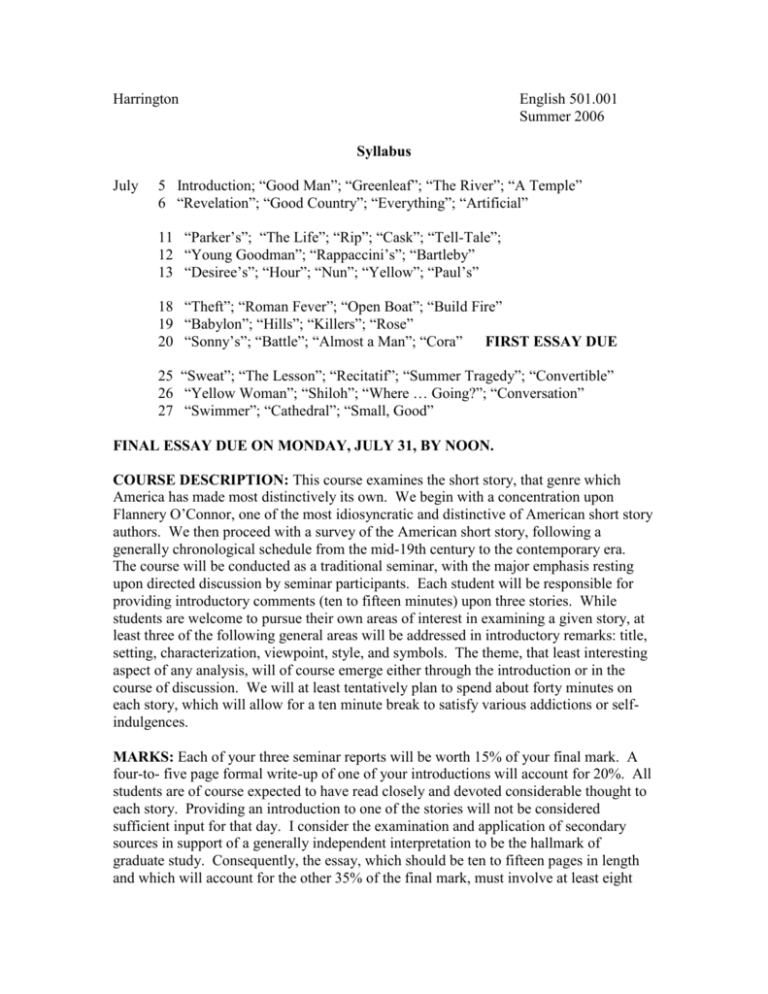
Harrington English 501.001 Summer 2006 Syllabus July 5 Introduction; “Good Man”; “Greenleaf”; “The River”; “A Temple” 6 “Revelation”; “Good Country”; “Everything”; “Artificial” 11 “Parker’s”; “The Life”; “Rip”; “Cask”; “Tell-Tale”; 12 “Young Goodman”; “Rappaccini’s”; “Bartleby” 13 “Desiree’s”; “Hour”; “Nun”; “Yellow”; “Paul’s” 18 “Theft”; “Roman Fever”; “Open Boat”; “Build Fire” 19 “Babylon”; “Hills”; “Killers”; “Rose” 20 “Sonny’s”; “Battle”; “Almost a Man”; “Cora” FIRST ESSAY DUE 25 “Sweat”; “The Lesson”; “Recitatif”; “Summer Tragedy”; “Convertible” 26 “Yellow Woman”; “Shiloh”; “Where … Going?”; “Conversation” 27 “Swimmer”; “Cathedral”; “Small, Good” FINAL ESSAY DUE ON MONDAY, JULY 31, BY NOON. COURSE DESCRIPTION: This course examines the short story, that genre which America has made most distinctively its own. We begin with a concentration upon Flannery O’Connor, one of the most idiosyncratic and distinctive of American short story authors. We then proceed with a survey of the American short story, following a generally chronological schedule from the mid-19th century to the contemporary era. The course will be conducted as a traditional seminar, with the major emphasis resting upon directed discussion by seminar participants. Each student will be responsible for providing introductory comments (ten to fifteen minutes) upon three stories. While students are welcome to pursue their own areas of interest in examining a given story, at least three of the following general areas will be addressed in introductory remarks: title, setting, characterization, viewpoint, style, and symbols. The theme, that least interesting aspect of any analysis, will of course emerge either through the introduction or in the course of discussion. We will at least tentatively plan to spend about forty minutes on each story, which will allow for a ten minute break to satisfy various addictions or selfindulgences. MARKS: Each of your three seminar reports will be worth 15% of your final mark. A four-to- five page formal write-up of one of your introductions will account for 20%. All students are of course expected to have read closely and devoted considerable thought to each story. Providing an introduction to one of the stories will not be considered sufficient input for that day. I consider the examination and application of secondary sources in support of a generally independent interpretation to be the hallmark of graduate study. Consequently, the essay, which should be ten to fifteen pages in length and which will account for the other 35% of the final mark, must involve at least eight secondary sources. The analysis in your essay must go well beyond the points established during the seminar sessions. As you have no doubt gathered, this is a rigorous schedule, and heavily dependent upon your presence in class. If you feel that competing obligations will impede your attendance or performance, now is the time to bail out. One absence will be very grudgingly tolerated–any more than that will lower your final mark by a full letter grade. Failure to contribute substantially to class discussion on a given day will be counted as an absence. CHECK YOUR SU E-MAIL DAILY! This syllabus is subject to revision. OFFICE HOURS: By appointment only PHONE: 410-543-6427 (x36427) E-MAIL: gmharrington@salisbury.edu
